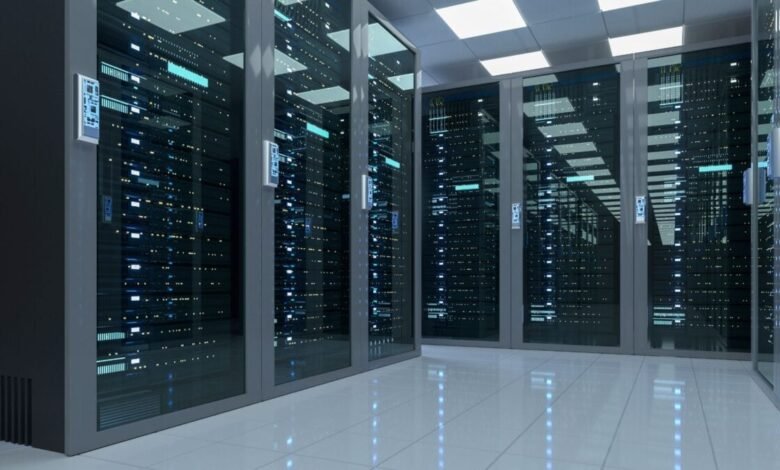An AI Data Center Is Coming for Your Backyard. Here’s What That Means for You

Elena Schlossberg and her husband bought their property in Prince William County, Virginia, in 2000. Over the years, the advent of artificial intelligence has turned their rural community into a major hub for data centers, and Ms. Schlossberg isn’t buying it.
Propelled into action by an Amazon Web Services data center project in 2014, Schlossberg founded the Prince William County Conservation Coalition. This grassroots organization aims to defend society against the impact of data centers on residents’ quality of life. Despite the coalition’s efforts, the county is now home to 44 data centers operated by various technology companies, with 15 more under construction, according to the latest tax revenue report.
“It’s not that I’m anti-data,” Schlossberg told Gizmodo. “But the way they are growing cannot continue.”
Prince William County is a microcosm of a larger phenomenon that has taken hold in rural America in recent years — especially in low-income areas and communities of color. Data centers are increasingly being built nationwide to support the rapid growth of artificial intelligence. While some may see the opposition as overblown, experts and community leaders are warning of very real consequences for Americans, including higher utility costs, environmental concerns, and public health risks.
If you don’t already have one in your city, there’s a good chance that will change in the near future. Here’s what it could mean for you.
Less money in your pocket
Proponents of data centers often argue that these facilities provide jobs and tax revenue for rural communities. But in practice, these benefits have not been fully realized.
“I don’t think that’s a very compelling case for what these data centers bring to the table,” Ben Green, an assistant professor at the University of Michigan’s School of Information, told Gizmodo. “And I think this is borne out by the number of communities that resist them.”
A data center project may create thousands of short-term construction jobs initially, but once the facility is up and running, only a dozen employees are typically required to oversee operations. According to Green’s research, data centers do not provide permanent, high-paying technology jobs because they operate as infrastructure projects rather than traditional companies.
Furthermore, data centers may eliminate long-term jobs already available to the community by purchasing land from local companies. Schlossberg points to the Merrifield Garden Center in Gainesville, Virginia, as one example. The nursery is scheduled to close in December after the 38-acre property was sold to a data center developer for $160 million, the Prince William Times reported.
Tax revenue can be a real benefit, but much of that is offset by tax breaks given to billion-dollar technology companies that build data centers, Green said. “It is not clear why we should give these companies – which are the richest in the world – money to come and essentially benefit from the resources of the region,” he said.
The pressure they place on local resources can be enormous. Data centers consume huge amounts of water and electricity, resulting in high utility costs for residents. Meanwhile, data centers often negotiate lower energy prices through bulk power purchase agreements (PPAs) with utility companies.
In August 2024, for example, Meta signed two long-term solar energy production agreements in Illinois and Louisiana. While solar PPA prices remained flat, energy prices for residents rose more than 20% in Clark County, Illinois, and 39% in Lafitte, Louisiana, according to Green’s research.
However, power-hungry data centers won’t just impact your wallet. In order to meet growing energy demand, many communities have had to keep fossil fuel plants open, Green explained. When the stressed electrical grid fails, most data centers rely on backup diesel generators. This leads to air pollution that poses significant risks to local health and the environment.
Greater risks to your health
Shaoli Ren, associate professor of electrical and computer engineering at the University of California, Riverside, is co-author of a recent study that looked at air pollution generated by data centers — primarily their standby generators and electricity use.
The results, which are subject to peer review, indicate that the total public health burden borne by US data centers will cost more than $20 billion annually by 2028, twice the cost of the US coal-based steel industry.
But what does this mean at the local level? Well, Ren and his colleagues also found that electricity consumption and backup generator use affect local air quality around data centers, leading to the emission of pollutants like PM2.5, sulfur dioxide, and nitrogen dioxide. Studies have linked long-term exposure to these pollutants to adverse health outcomes and premature death.
“We’ve found that in certain areas like northern Virginia, the direct impact is really significant,” Ren told Gizmodo. The analysis shows that — assuming actual emissions do not exceed 10% of the permissible level — data center standby generators registered in Virginia could actually cause 14,000 cases of asthma symptoms and other health outcomes.
This equates to a total public health burden of $220 million to $300 million annually, affecting residents not only in the immediate vicinity of the data centers but in many surrounding states and as far south as Florida.
“These air pollutants travel hundreds of miles,” Ren explained. “But most pollutants are concentrated within 50 miles [of the data centers]”.
What experts say you can do about it
Schlossberg and the Prince William County Conservation Coalition have become a model for communities looking to organize against local data center projects. She speaks with people across the country, helping them form their own grassroots efforts to confront the impact of data centers on their lives.
Her word of advice? “Never give up, even if you lose.” She said standing up to some of the largest companies in America is not easy, but it will make a difference. And there are plenty of solutions you can defend, according to Ren and Green.
Ren highlights the fight for policies that require data centers to switch to Tier 4 standby diesel generators, designed with the latest emissions control technologies to meet more stringent air quality standards. Green stresses urging policymakers to eliminate tax breaks for data centers and demand more transparency about their use of water and energy.
“Your community is your firewall,” Schlossberg said. “What we’re doing now — city by city, city by city — is mitigating the damage to salvage what we can salvage until this bubble bursts.”
Don’t miss more hot News like this! Click here to discover the latest in Technology news!
2025-10-29 11:05:00




